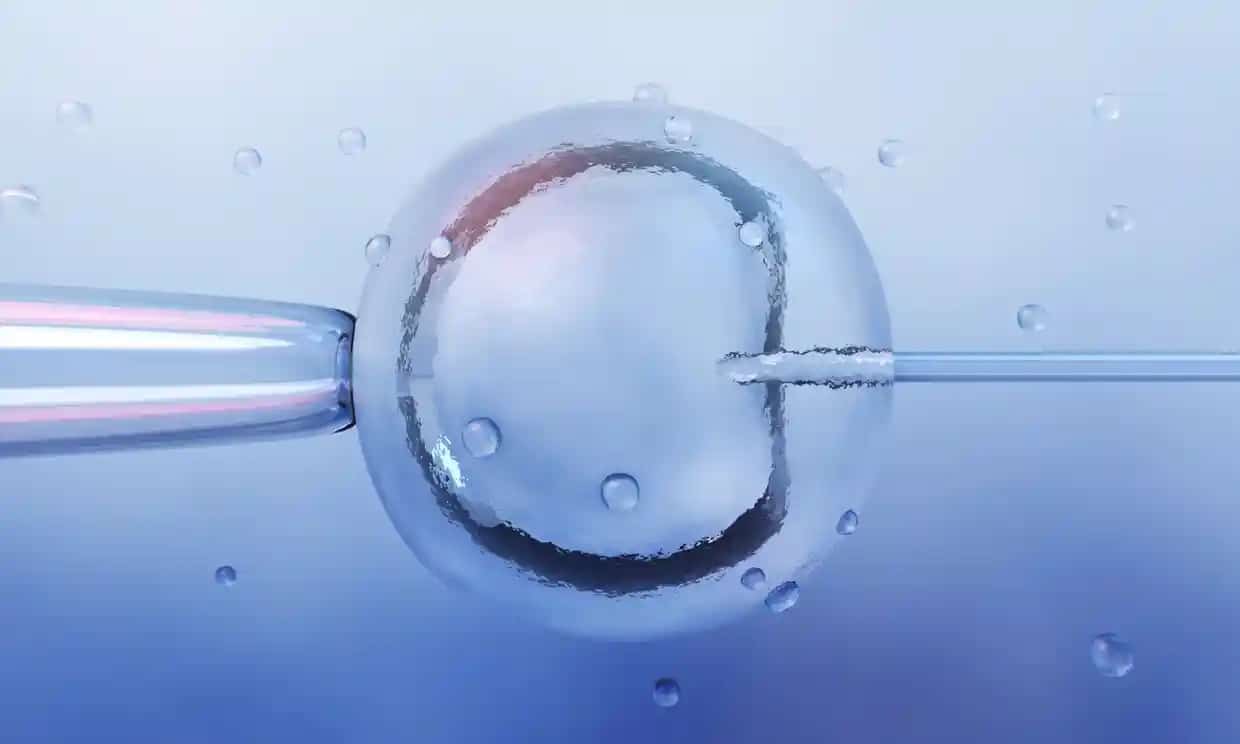What’s in today’s article?
- Why in News?
- About Mitochondria
- What is Mitochondrial Replacement Therapy (MRT)?
- Is MRT Procedure Risk-Free?
- Legality of MRT
Why in News?
- In the United Kingdom, the first baby has been created with DNA from three people has been born after doctors performed a ground-breaking IVF procedure.
- Earlier, in 2016, the UK became the first country in the world to legalise three-parent babies after its fertility regulator, Human Fertilisation and Embryology Authority (HFEA) had approved the process.
- The process is known as Mitochondrial Replacement Therapy (MRT).
About Mitochondria
- Mitochondria are double-membraned cellular organelle, which are crucial for generating energy.
- They, but what really makes them unique is that they divide independently of the cell.
- They are responsible for cell function in the human body.
- Certain defects might occur impacting on the way the mitochondria produces energy for the cells (Specially in the ‘energy-hungry’ tissues of the brain, nerves, muscles, kidneys, heart, liver), and thereby impacting cell function.
- The diseases that arise out of such mitochondrial mutations are called mitochondrial diseases.
- When the mitochondria are impaired and do not produce sufficient energy, that affects how the organs function, leading to a broad assortment of symptoms across the body, including brain damage, organ failure and muscle wastage.
- Mitochondria makes up less than 0.0005% of our entire DNA. But since the child receives it only from the mother, any aberrations in her mitochondrial DNA that may cause diseases is passed on completely to the child.
- According to the New York Stem Cell Foundation Research Institute, approximately 1 in 5,000-10,000 children are born each year with mitochondrial disease.
What is Mitochondrial Replacement Therapy (MRT)?
Image Caption: Mitochondrial Replacement Therapy
- Mitochondrial replacement therapy (MRT) is a new form of reproductive invitro fertilization (IVF) which works on the principle of replacing a women’s abnormal mitochondrial DNA (mt-DNA) with the donor’s healthy one.
- Step-by-Step Process –
- First, sperm from the father is used to fertilise eggs from the affected mother and a healthy female donor.
- The nuclear genetic material from the donor’s egg is then removed and replaced with that from the couple’s fertilised egg.
- The resulting egg has a full set of chromosomes from both parents, but carries the donor’s healthy mitochondria instead of the mother’s faulty ones.
- This is then implanted in the womb.
- The resulting baby has DNA from the mother and father as usual, plus a small amount of genetic material – about 37 genes – from the donor.
- The process has led to the phrase “three-parent babies”, though more than 99.8% of the DNA in the babies comes from the mother and father.
- The development of healthy baby free from genetic disorders and to terminate the lethal mitochondrial disorders are the chief motive of this technique.
Is MRT Procedure Risk-Free?
- The procedure is not without risks.
- Recent research has found that in some cases, the tiny number of abnormal mitochondria that are inevitably carried over from the mother’s egg to the donor egg can multiply when the baby is in the womb.
- So-called reversion or reversal could lead to a disease in the child.
- So far, the clinical experience with MRT has been encouraging, but the number of reported cases is far too small to draw any definitive conclusions about the safety or efficacy.
- Long-term follow-up of the children born through MRT is essential.
Legality of MRT
- The United Kingdom, in 2016, became the first country in the world to legalise MRT.
- Last year, Australia became the second country to approve this therapy.
- In the United States, the therapy is illegal as it is considered as a form of genetic modification, and changes made to eggs, and sperm and embryos — known as germline modification — can be passed on to future generations.
Q1) What is a chromosome in the human body?
Chromosomes are structures found in the centre (nucleus) of cells that carry long pieces of DNA. DNA is the material that holds genes. It is the building block of the human body. Chromosomes also contain proteins that help DNA exist in the proper form.
Q2) What is the role of X and Y chromosomes?
Individuals having two X chromosomes (XX) are female; individuals having one X chromosome and one Y chromosome (XY) are male.
Source: U.K. sees success in mitochondrial replacement therapy | Hindu | Guardian
Last updated on November, 2025
→ Check out the latest UPSC Syllabus 2026 here.
→ Join Vajiram & Ravi’s Interview Guidance Programme for expert help to crack your final UPSC stage.
→ UPSC Mains Result 2025 is now out.
→ UPSC Notification 2026 is scheduled to be released on January 14, 2026.
→ UPSC Calendar 2026 is released on 15th May, 2025.
→ The UPSC Vacancy 2025 were released 1129, out of which 979 were for UPSC CSE and remaining 150 are for UPSC IFoS.
→ UPSC Prelims 2026 will be conducted on 24th May, 2026 & UPSC Mains 2026 will be conducted on 21st August 2026.
→ The UPSC Selection Process is of 3 stages-Prelims, Mains and Interview.
→ UPSC Result 2024 is released with latest UPSC Marksheet 2024. Check Now!
→ UPSC Prelims Result 2025 is out now for the CSE held on 25 May 2025.
→ UPSC Toppers List 2024 is released now. Shakti Dubey is UPSC AIR 1 2024 Topper.
→ UPSC Prelims Question Paper 2025 and Unofficial Prelims Answer Key 2025 are available now.
→ UPSC Mains Question Paper 2025 is out for Essay, GS 1, 2, 3 & GS 4.
→ UPSC Mains Indian Language Question Paper 2025 is now out.
→ UPSC Mains Optional Question Paper 2025 is now out.
→ Also check Best IAS Coaching in Delhi


















